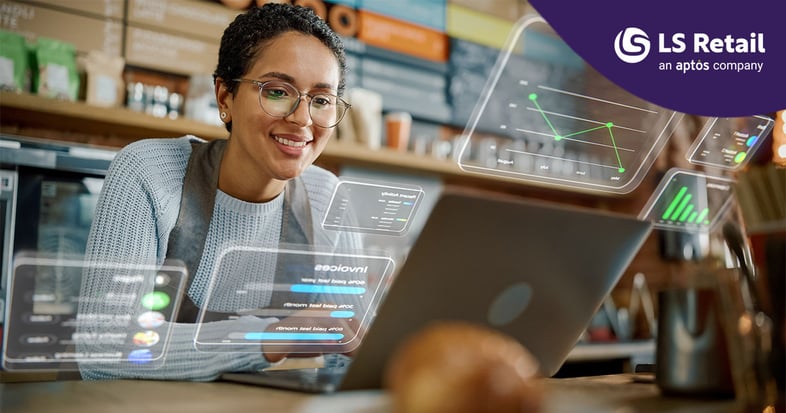Restaurants & technology: Turning challenges into growth opportunities

The restaurant industry runs on innovation. From drive-thrus to mobile ordering, restaurant technology has always redefined how guests order, pay, and dine. Today, with inflation, labor shortages, and growing competition, technology is no longer optional. It’s the foundation that keeps restaurant chains profitable and competitive.
Chains with multi-million-euro revenues and multiple locations face rising costs, tightening margins, and the pressure to deliver a consistent guest experience across every channel. The most successful players don’t treat technology as a patchwork of tools. They build their business on systems designed to scale.
Here are six ways leading restaurant chains use technology to stay ahead, and how your organization can do the same.
1. Personalize the guest experience with AI and analytics
Modern guests want more than good food, they expect restaurants to know what they like, anticipate their needs, and deliver relevant offers with every visit. Meeting that expectation requires more than transaction records. It takes intelligent systems that unify and analyze data across your business.
- AI forecasting helps you plan inventory and staff schedules with less waste. By applying the same type of predictive models used in modern ERP systems, restaurants can automate routine decisions such as replenishment, pricing, and scheduling.
- Restaurant analytics software turns sales data into insights. Executives gain real-time visibility into customer behavior, peak hours, and best-selling items across locations.
- Loyalty programs powered by data are proven growth drivers. Instead of generic discounts, you can target promotions to guest segments or individuals.
Example: Starbucks Philippines unified its POS, ERP, and analytics for instant sales insights and smarter pricing. Staff spend less time troubleshooting systems and more time with guests, building loyalty.
2. Consolidate and simplify operations
Fragmented software wastes staff time and leads to errors. Integrated restaurant platforms cut through complexity, linking the kitchen, POS, inventory, and accounting in real time. Also:
- Kitchen Display Systems (KDS) replace paper tickets with digital order screens, cutting mistakes and speeding prep.
- Integrated inventory management links sales to ingredient usage, reducing waste and stockouts.
- Smart automation with IoT sensors and AI-driven scheduling tools ensures the right staff and equipment are ready at the right times.
- Robotics can take over repetitive back-of-house tasks like frying or dishwashing, freeing staff to focus on service.
Example: Pret A Manger in the Middle East unified POS, inventory, kitchen, and accounting with LS Central. With real-time recipe and menu updates across locations, plus analytics that provide visibility chain-wide, the group reduced manual work, improved consistency, and trained staff faster with an intuitive interface.
3. Expand service and reach
Today’s guests jump between home delivery, curbside pickup, self-order kiosks, and dine-in—all in a single week. Successful chains meet them everywhere, using tech to create a seamless experience across channels.
- Self-service kiosks put guests in control of their orders while reducing front-of-house labor.
- Delivery and pickup integration ensures third-party orders flow seamlessly into kitchen systems without manual re-entry.
- Ghost kitchens and virtual brands let operators expand into new areas with lower overhead, test new menus, and reach fresh demographics.
- Voice and mobile ordering add convenience for guests on the go.
Example: KFC Greece implemented LS Central with kiosks, delivery app integration, and KDS. Guests order faster, errors dropped, and HQ updates menus across stores instantly. The result: smoother operations and higher customer satisfaction.
4. Create immersive guest experience
Competition isn’t just about price, it’s about atmosphere. Interactive menus, digital signage, and tools like augmented reality turn routine meals into shareable moments. These technologies not only boost upsell rates but also standardize branding and make every site memorable. By automating back-of-house tasks, staff spend their time with guests, not on manual steps.
Example: Hard Rock Café Budapest used LS Retail’s integrated platform to simplify operations, freeing staff from manual processes so they can deliver the vibrant guest-first atmosphere Hard Rock is famous for. Technology works behind the scenes, ensuring staff focus on creating memorable moments.
5. Prioritize sustainability, transparency, and resilience
Sustainability is a must. Guests, especially younger generations, want to support restaurants that care about their impact. Investors and regulators expect it too. Technology helps in making sustainability scalable, for example via:
- Supply chain traceability shows where ingredients come from, building guest trust.
- Waste tracking systems identify inefficiencies, optimize procurement, and reduce food waste.
- Energy management tools cut utility costs while supporting sustainability goals.
- Eco-friendly packaging can be integrated into procurement and inventory systems.
Example: Miscusi, the Italian pasta chain, built sustainability into its brand. By standardizing recipes and integrating sourcing data in LS Central, the company reduced waste and maintained efficiency while expanding. Guests enjoy consistent quality, and the chain stays true to its values.
6. Reinvent payment and connectivity
A great meal can be spoiled by a slow checkout. Modern diners expect quick, secure, and flexible options, like:
- Contactless payments and mobile wallets are now standard.
- Integrated restaurant payment solutions connect transactions directly with POS and ERP, ensuring accurate reporting.
- Frictionless checkout, from pay-at-table to app-based or even invisible payment experiences, shortens wait times and leaves guests with a positive final impression.
- Future-ready options like digital wallets or loyalty-linked payments keep restaurants ahead of the curve.
Restaurants that integrate payments tightly with management systems not only speed up checkout but also get cleaner financial data, reducing reconciliation headaches at scale.
Building the right technology foundation
The restaurant industry is evolving fast. Manual processes and disconnected systems can’t keep up. The right restaurant management software unifies operations, delivers insights, and adapts as trends change. By investing in technology today, restaurant leaders build a resilient business that stays profitable, scalable, and guest-focused for the future. Curious what this looks like in practice? Connect with our experts to map out the best path forward.

